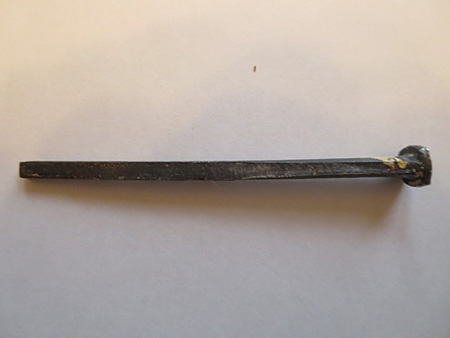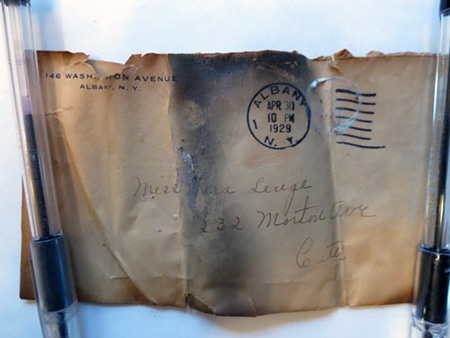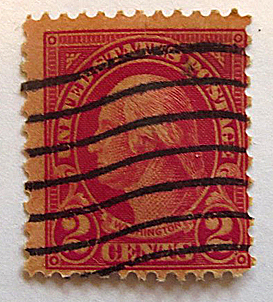February 29, 2016
Nothing controversial here, just some crappy looking old junk
In the last decade of the 20th Century I bought some old but run down buildings in my immediate neighborhood that were full of rental units. The buildings were solid but the prices were cheap, they needed a lot of work. So this is what I do with my time, I keep these buildings decent enough to rent and I get to stroll around the neighborhood and be The Lord Of The Land.
Actually, I don’t see myself as the owner of these buildings, I consider myself the current caretaker. These buildings, which are the bones, the structure of the City of Albany, were standing here long before I was born and it is my job to pass them on to the next caretaker intact and improved. Thus I spend a lot of time – too much time according to The Wife – making each apartment as comfortable and pleasant to live in as possible.
In the course of improving the apartments I’ve found some interesting things over the years. I keep hoping to find gold coins or valuable artifacts but so far no such luck. But I have found a few interesting things I’d like to show you. Well, I think they’re interesting.
 Cast Iron Dog Head Drawer Pull: Is It Really Old?
Cast Iron Dog Head Drawer Pull: Is It Really Old?
The top floor apartment of this one building that I own has what The Wife calls a dutch pantry, a short passageway between the living room and dining room that has built-in cabinets and big drawers. The building, most of which dates back to at least 1859, was a serious bargain to buy because of the amount of work needed to make it habitable. For example, the back bedroom of this top floor apartment had a big hole rotted through the middle of the floor caused by a leaking roof, this was covered up with a loose sheet of plywood. Of course before I bought it the building this apartment routinely passed City code inspections.
The handles on the pantry drawers were massive globs of paint. After examining them I became curious, so I scraped away enough paint to carefully unscrew one of them from the wood, and to this removed handle applied quite a bit of spray oven cleaner, a sure way to remove paint from metal. To my surprise I found these dog heads made of cast iron.
 Considering That This Was A Common Item The Detail Is Amazing
Considering That This Was A Common Item The Detail Is Amazing
I didn’t think they were original to the building but they may very well be. I was doubly surprised to notice that there was only one set of screw holes for each handle and no outlines of past handle shapes. It’s unlikely anybody who had replaced the handles over the past couple of centuries would have carefully removed any marks before covering the drawers with another coat of paint.
I read that these were actually common items in what was referred to as “early Victorian times,” which is when the building was built. In the middle of the 20th century “vintage reproductions” of handles like this became available again, but the photos I’ve found of these later knockoffs don’t have anywhere near the same detail. Unfortunately there are no words or numbers cast on the back so who knows. Maybe an expert can tell me.
In these latter days when everybody is crazy about cats we’ve forgotten that up until the last decades of the 20th Century most Americans were dog crazy and routinely decorated their homes with dog motifs. Today most people consider dog decorations a little odd unless they are dog enthusiasts. I always show off these handles to prospective tenants and proudly tell them how I discovered them hidden under globs of paint. No one ever seems to be impressed.
 Early “Type B" Square Nail, Showing Two Burred Ridges On The Same Side
Early “Type B" Square Nail, Showing Two Burred Ridges On The Same Side
The drawers that have these dog head handles are original to the building. In the course of repainting them I noticed what I thought was a nail the someone had banged into the cabinet so I pulled it out. But this turned out to be an original nail that was holding together the frame, so I said oops and immediately replaced the nail with a modern ceramic coated screw.
When I examined the nail I was surprised to notice that it was handmade. Well no, not exactly. I figured this nail is handmade because it is uneven and has a bluish tinge, that it had been sheared off from a piece of hot iron by a blacksmith. This one actually widens a bit in the middle and you can see the hack marks, so my modern eyes saw handwork. Actually true handmade nails sheared off a hunk of iron by a blacksmith pretty much disappeared by 1800.
It turns out this is merely a crude looking early “Type B” square nail, made by a surprisingly sophisticated machine that flipped an iron bar over to cut out the four sides of each nail. This machine, which needed close supervision, left burred ridges on the corners on the same side of the nail. That’s how you can tell it from an even earlier “Type A” machine that cut nails like a guillotine, this older cutting machine left burrs on the opposite corners. I’m not exactly sure why. Round wire nails made of steel which drive more easily into wood were introduced in 1892.
 Cast Iron Hinge Circa 1900
Cast Iron Hinge Circa 1900
These interior door iron hinges were also encased in globs of paint, these are in another building I own that was built around 1900 when Lincoln Park across the street was first opened. Many of these hinges were in bad shape and I was only able to repair three sets so they could be used again. (Please ignore the doorframe which needs a bit of paint.) Note the indistinct animal shapes, perhaps the earlier pressings of the hinges had more details before the dies wore out.

Another item I found under blobs of paint in the older-than-1859 building, or rather two of them, are these original iron door latches. After taking them apart and cleaning them up they work perfectly. I spray painted them black, which was their original color. Alas, the door handles are not original, but these 20th century handles I found somewhere and cleaned up go along pretty well with the latches. (Again, nothing like a close-up photo to bring out normally unnoticed flaws.)
 Combination Gas And Electric Lighting Fixture, Circa 1880
Combination Gas And Electric Lighting Fixture, Circa 1880
This is a very interesting item, a combination gas and electric light wall fixture that I pulled out of a kitchen pantry from a building that dates from about 1880. When I removed it the electric part was still working, an old but not original light bulb socket dangling hazardously by a wire. The gas light part of course was no longer working, the gas lighting system in the building was disconnected long ago.
Buildings from this era built for the middle class or for the better off usually have narrow gauge gas pipes running through the walls (this part of upper Morton Avenue was originally referred to as Doctor’s Row.) There was a short period of time at the end of the 19th Century and at the beginning of the 20th when gas and electric competed against each other for providing light for homes in urban centers. No one at the time could really say which was likely to win out, and so these combination fixtures gave the homeowner a choice which would not leave him or her in the dark if one or the other power source disappeared from the market.
 Fancy Restored Gas And Electric Fixture
Fancy Restored Gas And Electric Fixture
Here’s a picture of a somewhat fancier restored fixture complete with original electric socket that was on sale for $350. These wall fixtures would have had some kind of glass cover on top, for safety, to protect the flame and to diffuse the light. In wealthy houses, instead of glass the top cover would be thin mica sheets commonly called isinglass, which diffused the gas light with a brilliant glow much like a modern electric bulb.
The gas fixtures were usually installed on the walls at about five feet. When the gas lighting companies went out of business around the time of World War One, most of the combination gas and electric fixtures were removed and replaced with electric fixtures. This was commonly done by fixing with a screw an iron ring around the disconnected narrow gauge gas pipe that was still sticking out of the wall. Definitely not code today. The new electric fixture would be hung on this ring and the ring would secure the wires that powered the new fixture.
Five feet off the ground was the perfect height for a gas fixture, which had to be lit every night with a match and then turned off when one went to bed. Unfortunately five feet is a stupid location for an electric light fixture. I can’t tell you how many time I’ve smacked my head on one of these electric fixtures. I’ve repeatedly used colorful language and ended up knocking holes in the lathe and plaster walls with a hammer so as to move the damn things a few feet up the wall so I could stop smashing the fixtures with my skull.
 Expansion Tank For A Pumpless Hot Water Circulation System
Expansion Tank For A Pumpless Hot Water Circulation System
Recently I removed an old unused expansion tank for the heating system from an upstairs closet in a building built before 1880. These tanks, which were probably installed at the beginning of the 20th Century, are made of riveted brass and have a glass tube in front to show how full of water they are. This tank is beat and exceedingly ugly and covered in paint but here it is anyway.
These expansion tanks were part of a clever hot water radiator system that did not use electric pumps to push water from the basement to the first and second stories of a building. There has to be one of these tanks on each floor usually tucked away in a closet. Somehow it works. I have a working version of this pumpless system in my own two story house which was built in 1913 and have never had any problems, other than the admittedly useless glass gauges on the tanks breaking seal after a hundred years and leaking all over the closets.
When I finally was able to detach the tank from the iron pipes that held it in place I was excited to see a couple of old envelopes had been stuck underneath. I thought, hey maybe someone stuck these under here to hide them because they were valuable, maybe a stash of silver certificates or a treasured memento, details of a scandalous story or a letter from a famous person?
 Letter For Miss Vera Lenge, City
Letter For Miss Vera Lenge, City
Well no, turns out these were receipts of payment from a life insurance company and from a doctor. Obviously they were among the crap someone had piled up on the shelf and these two letters slipped under the tank and were forgotten when someone cleared out this closet. So far I haven’t found anything in a vacant apartment more valuable than pocket change, and none of the small change I’ve found collectable. Okay, once I found an Indian Head penny. I keep hoping for a 1909S VDB Lincoln penny stuck under the baseboard.
Both of the letters and the envelopes are dated April 30, 1929. The paper is yellow and fragile and falling apart, presumably it was crisp and white when it was new. Such mundane correspondence is not valuable or of particular historical interest but I really hate to throw out stuff like that.
 Two Cent Stamp That fell Off The Envelope
Two Cent Stamp That fell Off The Envelope
One letter is addressed by typewriter to Elvira C. Lenge 232 Morton Avenue (the address of this building) Albany NY, the other hand addressed to Miss Vera Lenge 232 Morton Avenue City. Seriously, you didn’t have to write “Albany” on an envelope for local mail back then, everyone knew that “City” meant the center of activity for this region. And a stamp for a letter cost two cents.
A very interesting detail is that the letters were both composed on the same day in two different locations by two different concerns and arrived together the very same day that they were sent. If you consider the inefficiency of the modern mail system, where it can take up to a week to send a greeting card across town, you have to wonder what went wrong, why can’t the mail function as well as it did 87 years ago. Of course in this century we have email and texting and videochat so the matter of declining mail services has become moot. But still.
I would guess that these two women were unmarried sisters living in the what was then the upstairs flat. Both must have dutifully paid their bills the same day. One was a semi-annual life insurance premium to a building which was within walking distance of the Lenge sister’s home. Presumably they mailed in their payments, it’s possible but unlikely either of them walked to the insurance building and then waited for receipts to arrive by mail.
 Life Insurance Premium Receipt For Elvira C. Lenge
Life Insurance Premium Receipt For Elvira C. Lenge
(Click On Photo to See Full Size)
Elvira received from the insurance company a printed form letter with a typewriter written body and filled-in particulars, but it does not name the amount that she paid. The company is The Travelers, the letterhead says they are an insurance company, an indemnity company and a fire insurance company, the agent is Fenster Brothers – Fleishman Inc. The address they give is simply Albany County Savings Bank Building with no number or street. I see that building was at 100 State Street way downtown, back then everyone just knew where that was.
I wonder how the insurance company survived the stock market crash and economic collapse that would be coming in October of that year. I wonder if the Lenge sisters lost their investment, did either of them ever collect on the premiums. Who were the recipients, each other or were there other relatives who got a windfall when they passed on? Or maybe just Elvira paid premiums for herself?
The other handwritten letter to Miss Vera is a shorter printed form letter from Dr. Eugene E. Hinman, Dr. Yes, it says Dr. twice. He was located at 146 Washington Avenue, also within walking distance of the sister’s flat. The receipt says May 1 although it also arrived on April 30 according to the envelope.

Receipt From The Doctor For Miss Vera Lenge
This receipt simply says that Miss Vera received Professional Services for which she paid the sum of $2,00. Now this is different, apparently the lady visited the doctor in person but had to wait for the secretary to type and mail the receipt. Remember, back then manual typewriters were the cutting edge of printing technology, but it took time to type out these letters. So Miss Vera had to trust her doctor and wait for her receipt.
Or actually, that’s not clear. If you look at it, this document may not be a receipt, it may be a bill for “professional services.” That could mean Miss Vera tossed it into the closet and forgot about it.
So that little glimpse into the lives of former tenants of the building of which I am the current caretaker owner leaves me wondering where they came from and what happened to them. Neither name pops up on Google. I imagine two Victorian ladies aging together in a respectable neighborhood overlooking the park, I wonder how long they continued to live this way. I do know one thing for sure. By the time of these letters the gas lighting system in the building was long disconnected, the two sisters were enjoying the convenience and safety of electric lighting in their modern urban flat.